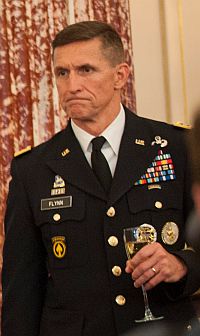Reuters reports: The Obama administration’s plans for the U.S. nuclear weapons complex, including modernization of bombs, delivery systems and laboratories, will cost the country about $355 billion over the next decade, the Congressional Budget Office said on Friday.
That is nearly $150 billion more than administration’s $208.5 billion estimate in a report to Congress last year, an analyst at an arms control group said, and since the modernization effort is just beginning, costs are expected to greatly increase after 2023.
The budget office said President Barack Obama had requested $23.1 billion for U.S. nuclear forces in the 2014 fiscal year, including $18 billion to maintain the weapons and supporting laboratories as well as the submarines, bombers and missiles to deliver the weapons.
The Washington Post reports: An Air Force general in charge of nuclear weapons repeatedly drank too much and behaved like a boor last summer during an official trip to Moscow, where he insulted his Russian hosts and hung out with two suspicious women he met at a hotel bar, according to an investigative report released Thursday.
Maj. Gen. Michael Carey, who was commander of the Air Force’s arsenal of land-based intercontinental ballistic missiles, “acted in a manner that exceeded the limits of accepted standards of good conduct” during a four-day visit to Moscow in July, according to an investigation conducted by the Air Force inspector general.
Carey’s behavior stunned his aides and other colleagues traveling with him for a nuclear security exercise and meetings with Russian officials. They said he started drinking during a stopover in Zurich and kept it up during three days in Moscow, causing a string of gaffes and embarrassments that led Air Force officials to relieve him of his command.
Carey was fired in October from his job as commander of the 20th Air Force, which is responsible for maintaining and operating the country’s intercontinental ballistic missiles. At the time, Air Force leaders said he was under investigation for “personal misbehavior” but divulged few details because the case was pending.
The Air Force released the partly redacted 44-page investigative report Thursday in response to requests filed by reporters under the Freedom of Information Act. [Continue reading…]

 When Ian Flemming created the fictional
When Ian Flemming created the fictional  For the
For the 

